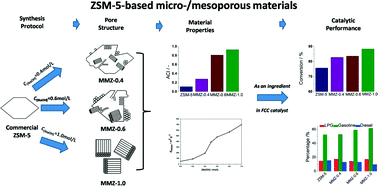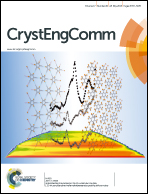Effects of dissolution alkalinity and self-assembly on ZSM-5-based micro-/mesoporous composites: a study of the relationship between porosity, acidity, and catalytic performance†
Abstract
ZSM-5-based micro-/mesoporous composites have attracted extensive attention as a promising material that could be industrialized in the near future. The hierarchical structure and catalytic performance of the ZSM-5-based hierarchical composite are highly dependent on its treatment conditions. Of these synthesis parameters, dissolution alkalinity is the most important one. However, systematic studies on the effects of dissolution alkalinity, specifically those that discuss the relationship between porosity, acidity, and catalytic performance in ZSM-5-based hierarchical composites by the combined dissolution and self-assembly method, have not yet been reported. In this article, the porosity and acidity of ZSM-5-based micro-/mesoporous composite samples made by select dissolution alkalinities are systematically investigated. Various characterization techniques illustrate that three different groups of ZSM-5-based micro-/mesoporous composites are classified based on their distinctive indexed hierarchical factor values, I through III. Group I, treated with 0 to 0.5 mol L−1 NaOH, is mesoporous ZSM-5 attached by Al-MCM-41-like ordered mesostructures and has a high yield for liquid petroleum gas. Group II, treated with 0.5 mol L−1 to 1.0 mol L−1 NaOH, is a mixture of ZSM-5 zeolite phase and Al-MCM-41-like ordered mesostructure phase and has a high yield of light oil. Group III, treated with 1.0 mol L−1 NaOH, is formed by complete collapse of ZSM-5 crystals and formation of Al-MCM-41-like ordered mesostructures and exhibits a high yield of total liquid oil. Due to increasingly enhanced accessibility of acid sites (indexed as accessibility index), all three groups of ZSM-5-based micro-/mesoporous composites show comparable conversion for vacuum gas oil cracking compared with their parent counterpart. These results are of vital importance during the selection of the synthesis conditions and scale-up tests of ZSM-5-based micro-/mesoporous composites to selectively produce liquid petroleum gas, light oil, and total liquid oil.


 Please wait while we load your content...
Please wait while we load your content...